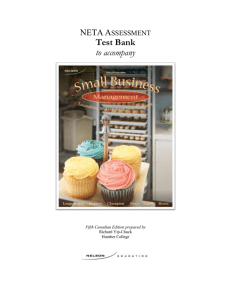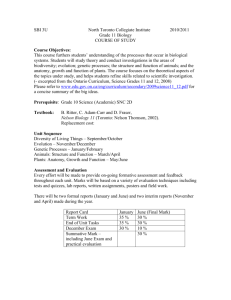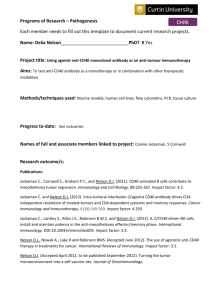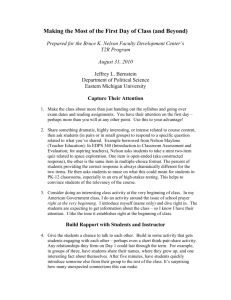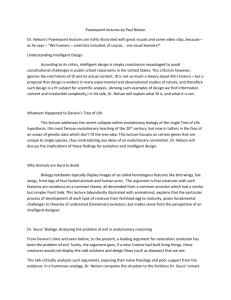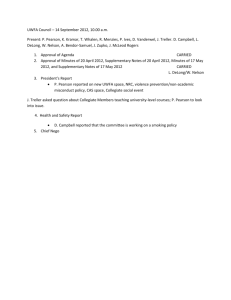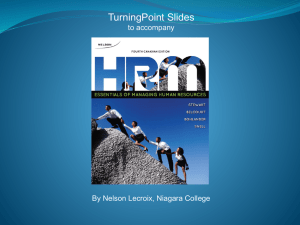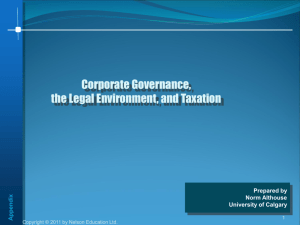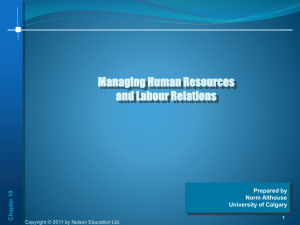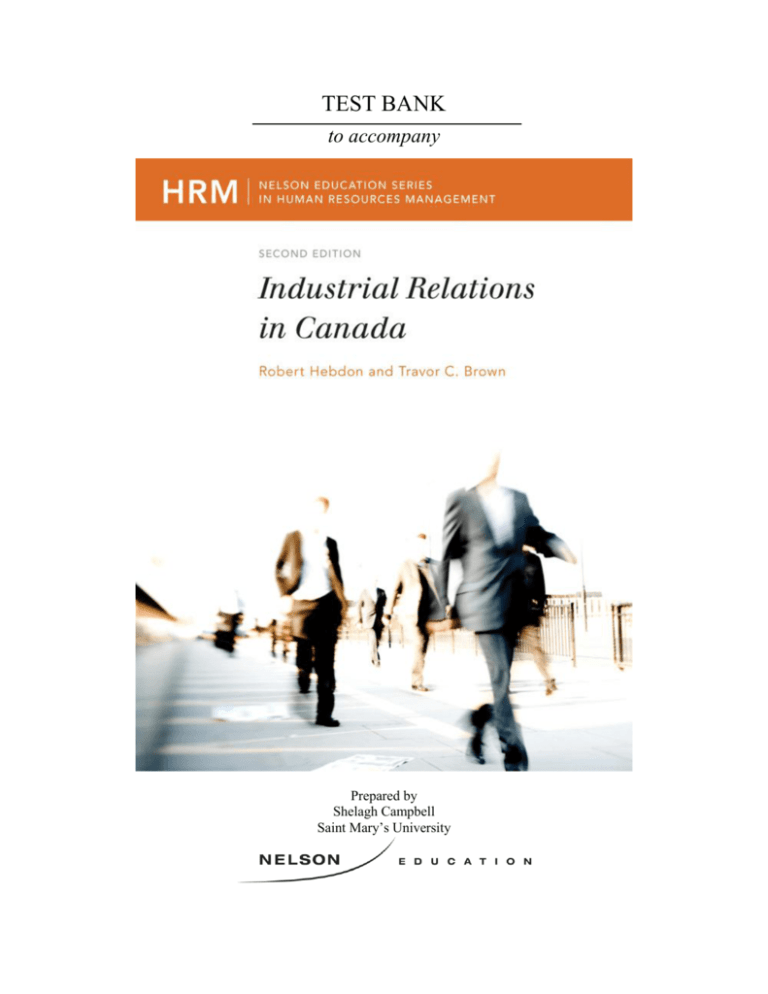
TEST BANK
to accompany
Prepared by
Shelagh Campbell
Saint Mary’s University
Industrial Relations in Canada, 2e
By Robert Hebdon and Travor C. Brown
Test Bank by Shelagh Campbell
Part of ISBN: 0-17-661743-4
COPYRIGHT © 2012 by Nelson Education, Ltd. Nelson is a registered trademark used herein under license.
For more information contact Nelson, 1120 Birchmount Road, Scarborough, Ontario M1K 5G4. Or you can visit our
Internet site at www.nelson.com.
ALL RIGHTS RESERVED. No part of this work covered by the copyright hereon may be reproduced or used in
any form or by any means—graphic, electronic, or mechanical, including photocopying, recording, taping, web
distribution or information storage and retrieval systems—without the written permission of the publisher.
ii
COPYRIGHT © 2012 by Nelson Education Ltd.
Introducing the Nelson Education Teaching Advantage (NETA) Test Banks. In most college and
university courses, a large percentage of student assessment is based on multiple choice testing. But
many instructors use multiple choice reluctantly, believing that it is a methodology best used for
teaching what a student remembers rather than what she or he has learned. Furthermore, the quality of
publisher-supplied test banks can vary.
Nelson Education Ltd. believes that a good-quality multiple choice test bank can test not just what
students remember, but higher-level thinking skills as well. Recognizing the importance of multiple
choice testing in today’s classroom, Nelson has created the Nelson Education Teaching Advantage
program to ensure the high quality of our test banks.
The test bank for Management of Occupational Health and Safety, Fifth Edition was developed under
the Nelson Education Testing Advantage. NETA was created in partnership with David DiBattista, a 3M
National Teaching Fellow and professor of psychology at Brock University. NETA ensures that test bank
authors have had training in two areas: developing clear multiple choice test questions while avoiding
common errors in construction, and creating multiple choice test questions that “get beyond
remembering” to assess higher-level thinking.
The outcome of NETA development is that as you select multiple choice questions from your Nelson
test bank for inclusion in tests, you can easily identify whether items are memory-based or require your
students to engage in higher-level thinking. By making your selections appropriately, you can construct
tests that contain the proportion of recall and higher-level questions that reflects your personal
instructional goals.
All NETA test banks are accompanied by David DiBattista’s guide for instructors, “Multiple Choice
Tests: Getting Beyond Remembering.” This guide has been designed to assist you in using Nelson test
banks to achieve your desired outcomes in the classroom.
The NETA test materials are presented in two formats:
1.
Test Bank. Containing 600 questions, this is a thoroughly revised Test Bank by Shelagh Campbell
of Saint Mary’s University. Every question and answer was read and reviewed for accuracy by multiple
sources. A Canadian proofreader checked all questions, including the new or revised questions created for
the Second Edition. Each chapter of the test bank is organized by type of question and includes text page
references. About 420 multiple choice, 120 true/false, and 60 Short Answer. Files are provided in rich text
format for easy editing and printing with all common word-processing formats.
2.
ExamView. All Test Bank questions are included in the ExamView computerized version. The
easy-to-use software is compatible with Microsoft Windows and Mac. Create tests by selecting questions
from the question bank, modifying these questions as desired, and adding new questions you write
yourself. You can administer quizzes online and export tests to WebCT, Blackboard, and other formats.
Test Bank to accompany Industrial Relations in Canada, Second Edition
iii
Table of Contents
Chapter 1 Introduction ...................................................................................................1-1
Chapter 2 The Legal Environment ................................................................................2-1
Chapter 3 Economic, Social, and Political Environments ..............................................3-1
Chapter 4 Labour History ...............................................................................................4-1
Chapter 5 The Union Perspective ...................................................................................5-1
Chapter 6 The Management Perspective ........................................................................6-1
Chapter 7 Negotiations ..................................................................................................7-1
Chapter 8 Collective Agreement Administration ..........................................................8-1
Chapter 9 Strikes and Dispute Resolution .....................................................................9-1
Chapter 10 Impacts of Unionization.............................................................................10-1
Chapter 11 Public-Sector Issues ...................................................................................11-1
Chapter 12 Globalization of Labour Markets ...............................................................12-1
Appendix A: Arbitration Simulation: The Case of Bradley Ennis ............................... A-1
Appendix B: Collective Bargaining Simulation: Consolidated Metals Ltd. (CML) ..... B-1
Appendix C: Collective Bargaining Simulation: Wally’s Janitorial Services .............. C-1
iv
COPYRIGHT © 2012 by Nelson Education Ltd.

